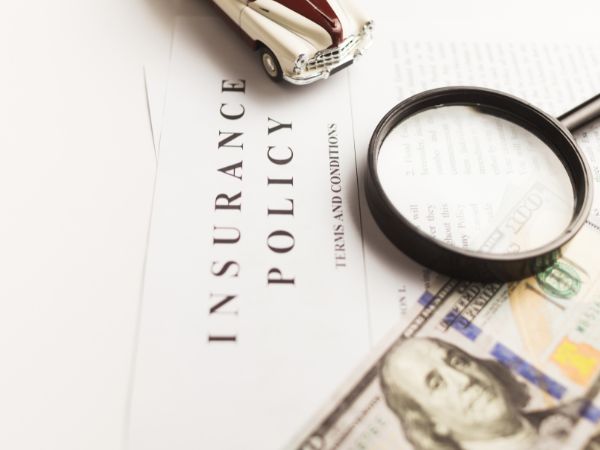Finding affordable health coverage feels like trying to solve a never-ending puzzle. Premiums keep rising, policies get complicated, and half the time you wonder if you’re paying more for paperwork than actual care. But here’s the good news: there are still plenty of cheap health insurance options out there if you know where to look. Let’s break it down in plain English, without the insurance jargon that usually makes your head spin.
Why Cheap Health Insurance Still Matters
Healthcare costs aren’t slowing down. In fact, 2025 has already seen bumps in hospital charges, prescription prices, and even the little things like lab tests. Without some sort of coverage, a single unexpected medical bill can derail your savings. That’s why finding cheap health insurance options isn’t just about saving a few bucks—it’s about protecting yourself from financial chaos.
And let’s be real: not everyone can afford those shiny “all-inclusive” plans with sky-high premiums. What most people want is balance. Decent coverage. Reasonable price. No nasty surprises.
Marketplace Plans and Subsidies
One of the most straightforward ways to explore cheap health insurance options is through the federal or state health insurance marketplace. Depending on your income, you might qualify for subsidies (a fancy word for discounts) that significantly reduce monthly premiums.
Here’s the thing: many people don’t even realize they qualify for assistance. If your income falls under a certain threshold, you could snag a plan that costs less than your monthly phone bill. Sure, it might come with higher deductibles, but for many families, that trade-off works just fine.
Short-Term Health Plans
Now, these aren’t perfect, but they’re worth mentioning. Short-term health insurance plans are like temporary safety nets. They usually cover basic emergencies and doctor visits but don’t include all the benefits of full marketplace plans.
The upside? They’re cheap. Really cheap. Perfect if you’re between jobs, waiting for new coverage to kick in, or just need something in place for a few months. The downside is limited coverage, so don’t expect them to pay for long-term treatment or major surgeries.
Medicaid and State Programs
If your income is on the lower side, Medicaid should be the first door you knock on. Many states expanded Medicaid eligibility, which means more people qualify than ever before. For families, single parents, or individuals with limited income, it’s one of the most affordable—sometimes even free—cheap health insurance options available.
And don’t forget about state-specific programs. Some states run unique health initiatives for children, pregnant women, or those with chronic conditions. They’re worth exploring because they often provide solid coverage at little to no cost.
High-Deductible Health Plans with HSAs
High-deductible health plans (HDHPs) often come with lower monthly premiums. They’re not for everyone, but when paired with a Health Savings Account (HSA), they can actually be smart financial tools.
Here’s how it works: you pay lower premiums each month, set aside pre-tax money into your HSA, and then use that account to cover medical expenses. It’s like building a mini emergency fund specifically for your health. The best part? Unused HSA funds roll over year to year. So if you’re generally healthy and don’t visit the doctor too often, this could be one of the most practical cheap health insurance options out there.
Employer-Sponsored Insurance
If you’re lucky enough to have job benefits, check what your employer offers. Employer-sponsored insurance tends to be more affordable because companies often split the cost of premiums. Even small businesses are starting to offer scaled-down group plans that can save you a lot compared to shopping on your own.
The catch? You usually have fewer choices, and switching plans mid-year can be tricky. Still, if your workplace offers coverage, it’s almost always cheaper than buying directly from an insurer.
Catastrophic Health Plans
Designed mainly for young adults under 30 or those with hardship exemptions, catastrophic plans are as bare-bones as it gets. Think of them as the “worst-case scenario” option. They come with super-low monthly costs but sky-high deductibles.
These plans cover essential health benefits after you meet the deductible and always include free preventive care. If you’re healthy, under 30, and mainly worried about protecting yourself from medical disasters, this might be your cheapest way to stay covered.
Health Sharing Ministries and Co-Ops
This one’s a little unconventional. Health sharing ministries or co-op programs aren’t technically insurance, but rather communities of people who pool money to cover medical expenses.
They often cost less than traditional insurance, but you need to read the fine print carefully. Some have restrictions on what they’ll cover, and not all providers accept them. Still, for people looking for alternative cheap health insurance options, they’re worth exploring.
Tips for Finding the Best Deal
The truth is, no single option fits everyone. But there are a few tricks to make sure you’re not overpaying:
- Compare multiple plans side by side, not just by premium cost but also deductibles and out-of-pocket limits.
- Check provider networks so you don’t end up with a plan that your doctor won’t take.
- Reevaluate every year during open enrollment—your eligibility for subsidies or state programs might change.
The Bottom Line
Finding cheap health insurance options in 2025 isn’t about picking the first low-cost plan you see. It’s about knowing your situation, weighing your risks, and choosing a plan that protects both your health and your wallet. Whether that means a subsidized marketplace plan, a short-term policy, or even a high-deductible plan with an HSA, the key is to stay covered.
Because let’s face it—life throws curveballs. And having at least some form of health insurance gives you peace of mind when those curveballs hit. So take the time, shop around, and lock in the coverage that works best for you without draining your bank account.



